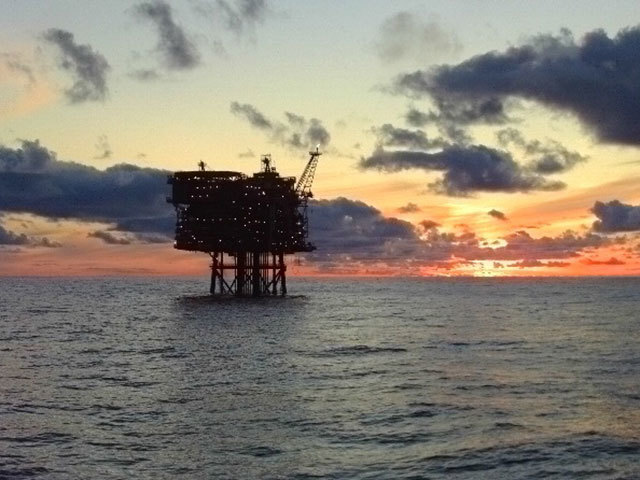
Economic and political dynamite is the only way to describe the new report by N-56, an admittedly pro-independence think tank, that suggests that the remaining tax revenue from North Sea oil and gas could be £300billion beyond its former upper estimate of £365billion that could be garnered to 2040.
Many people in campaigns for and against Scottish independence have argued that the outcome of the referendum will hinge on the strength of the economic arguments about people in Scotland being better or worse off in an independent country. Central to that debate has been future revenue from North Sea oil and gas.
The projections by the UK’s office for budget responsibility (OBR) of future exploitable reserves have been much lower than those of industry body Oil and Gas UK and respected academics such as Professor Alex Kemp.
According to N-56 the OBR oil and gas tax revenue prediction from 2014-2040 is a much more conservative £57billion on the back of 10 billion barrels of oil equivalent (in contrast the N-56 £365billion forecast assumes high prices and high production brought about by the reforms proposed by Sir Ian Wood’s review earlier this year).
There is a feeling of déjà vu here with respect to the dismissal of the size of North Sea revenue by the UK government prior to a referendum on the country’s constitutional future – it’s not so different to what appears to have happened in 1979 during the Scottish devolution referendum.
In the present case, however, there might not be any need to wait 30 years for contrary memos to be made public. Most informed comment supports Oil and Gas UK’s estimate of a remaining recoverable bounty of 24 billion barrels of oil equivalent from the North Sea (with some notable voices of dissent). But now N-56 is convincingly arguing that even that amount may be almost a 100% understatement. On this group’s rationale, an additional 21 billion barrels may be exploitable.
Why? The report makes the simple point that no consideration in our North Sea forecasts has been given to exploiting the unconventional oil and gas reserves contained within the vast Kimmeridge clay region that lies mainly in the northern and western areas of the North Sea. Perhaps they have been excluded for good reasons in the past, but this now defies all logic. The underwater fracking technology for exploiting them now exists. The expertise now exists.
The economic transformation of the US through shale reserve exploitation is testimony to the huge potential of unconventional oil and gas.
So far, exploration in the UK has focused on land-based deposits mostly located in England and controversially sometimes within national parks. Undeterred, the UK government has given a green light for their exploitation.
Such reserves have also been raised as a reason for Scotland staying within the UK, on the argument that the majority is located south of the border. But now the pendulum has swung 180 degrees with the revelation of the prodigious size of unconventional reserves lying mostly within Scottish waters.”
There are numerous problems associated with exploiting on-land shale reserves. Tales of contamination to surface water, groundwater and general environmental degradation abound. Compelling and disturbing videos have appeared on YouTube that are consistent with the anecdotal evidence. For a home owner in the vicinity of a fracking well where environmental degradation has occurred, it is likely that fracking will be viewed as no more than greed-inspired vandalism. There will be little middle ground between producers and disgruntled home owners.
It must be a source of concern for fracking companies that there are major differences between undertaking fracking operations on land in England and the US. Apart from geological differences, the small landmass of England means that when things go wrong, the impact can be catastrophic.
Most of these problems do not apply to fracking in the North Sea – which has already been routine for years. For example, contamination of water courses will not happen in the open sea. Once again the North Sea oil bank has come up trumps.
It must be said that some commentators have raised doubts about the potential of underwater fracking. The N-56 forecasts were labelled a “gross exaggeration” in one report on the rationale that the technology costs 10 times that of onshore fracking and is therefore not going to be economically viable.
It is true that offshore fracking is in its infancy and currently is expensive to carry out. However, the huge reserves of oil and gas available offshore from unconventional reserves far outweigh those from onshore reserves. And vast sums have already been invested in developing the offshore technology. It is in the process of being tested in several regions but primarily in the Gulf of Mexico.
Offshore fracking in Scotland should be viewed as a long-term project that may extend the life of the North Sea oil and gas industry for another 100 years and the cost of offshore fracking will fall exponentially as the technology is refined over time. The revenue forecast by the N-56 report may well be realised.
This news about the real potential for North Sea oil and gas operations to continue for perhaps the next 100 years should be welcomed by all parties. It could mean a huge potential economic impact for the country. But will it? The credibility of the No campaign may be put to the test as it comes to terms with this game changer.
Alex Russell and Peter Strachan are professors at Robert Gordon University.
Recommended for you
